Vulcan Centaur on schedule for first launch in 2022 as New Glenn slips
Wednesday, 23 March 2022 16:22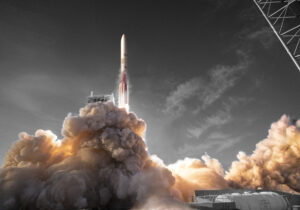
United Launch Alliance remains confident that its Vulcan Centaur rocket will make its first launch this year while Blue Origin is pushing back the first flight of its New Glenn vehicle.
Op-ed | The Case for Space Arbitration: Can you recover damages caused by space collisions?
Wednesday, 23 March 2022 15:29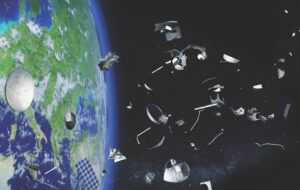
Opening outer space to more and more private parties and multiplying the number of space objects being launched brings about infinite new opportunities — and substantial risks.
The post Op-ed | The Case for Space Arbitration: Can you recover damages caused by space collisions? appeared first on SpaceNews.
Gaia finds parts of the Milky Way much older than expected
Wednesday, 23 March 2022 15:00
Using data from ESA’s Gaia mission, astronomers have shown that a part of the Milky Way known as the ‘thick disc’ began forming 13 billion years ago, around 2 billion years earlier than expected, and just 0.8 billion years after the Big Bang.
SES beat multiple bidders for Leonardo DRS satcom business
Wednesday, 23 March 2022 14:45
Leonardo DRS sold its satellite communications business to SES for $450 million after considering bids from several interested buyers.
The post SES beat multiple bidders for Leonardo DRS satcom business appeared first on SpaceNews.
Ukrainian launch startup Promin juggles research, territorial defense
Wednesday, 23 March 2022 14:07
During the day, they are working on the Kyiv-headquartered startup’s lightweight solid-fuel rocket. But after hours, Promin Aerospace employees volunteer to protect their homes and families as territorial defense members and humanitarian aid coordinators.
Turning astronaut waste into fuel on Mars
Wednesday, 23 March 2022 12:52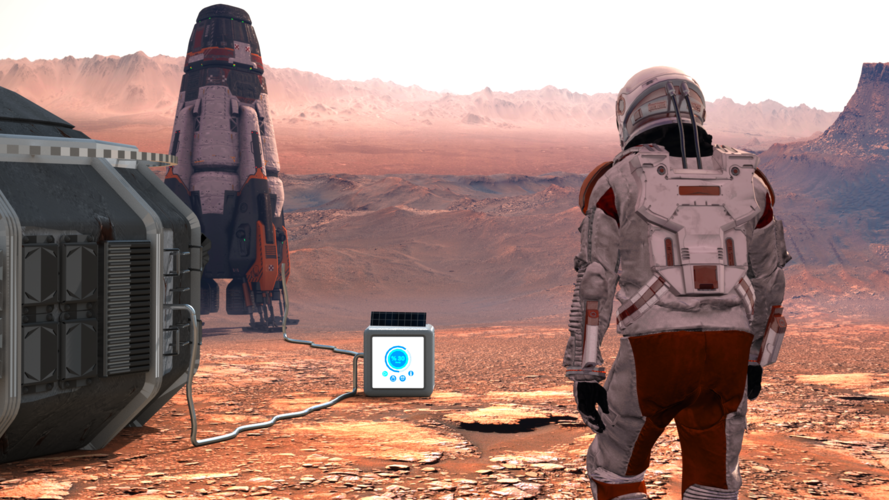 Image:
Turning astronaut waste into fuel on Mars
Image:
Turning astronaut waste into fuel on Mars Boeing eyes investment candidates at Satellite 2022
Wednesday, 23 March 2022 12:32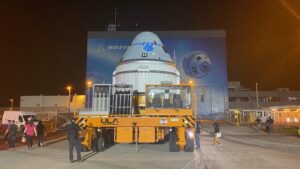
Boeing executives are meeting with startups at the Satellite 2022 conference with an eye toward investment and collaboration.
The post Boeing eyes investment candidates at Satellite 2022 appeared first on SpaceNews.
Universal connectivity requires extensive collaboration
Wednesday, 23 March 2022 12:03
Within a decade, satellite mobility providers expect to offer customers a seamless transitions between terrestrial and satellite networks.
The post Universal connectivity requires extensive collaboration appeared first on SpaceNews.
PSN orders Indonesia-focused satellite from Boeing for 2023 launch
Wednesday, 23 March 2022 11:34
Indonesia’s Pasifik Satelit Nusantara (PSN) said March 23 it has ordered a high-throughput satellite from Boeing to launch on a SpaceX Falcon 9 in 2023.
The post PSN orders Indonesia-focused satellite from Boeing for 2023 launch appeared first on SpaceNews.
Australia wants a space industry. So why won't we pay for the basic research to drive it?
Wednesday, 23 March 2022 11:22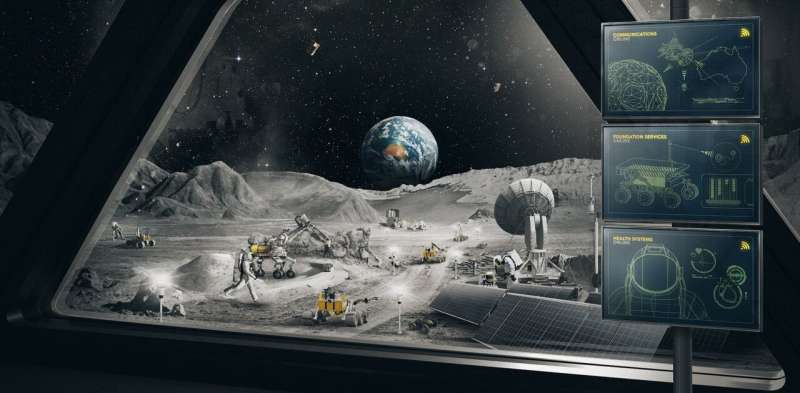
In the past few years, Australia has formed its own space agency and launched a defense "space command". Billions of dollars for defense, and hundreds of millions for civilian space, have been allocated from the public purse to develop capability in this growing sector.
This funding covers the Moon-to-Mars Program, the SmartSat Cooperative Research Center, the Modern Manufacturing Initiative, opportunities in defense, various state-funded projects such as SA-SAT, and more.
This level of investment is unquestionably a good thing. But the great majority of it supports applied research and engineering, and commercialization of outcomes. None of the new funding goes to basic research.
In the United States, Canada, United Kingdom, France, Germany, Italy, India, South Korea, China, Russia, and United Arab Emirates—to name a few—basic research in space and planetary science, and science missions, are key elements in strategies to grow their sectors. In Australia, this kind of fundamental work only gets around A$2 million a year. It hasn't budged in a decade.
Why basic research is important
Ursa Space raises $16 million in Series C round
Wednesday, 23 March 2022 11:15
Ursa Space, a geospatial and analytics company, raised $16 million in a Series C round led by Dorilton Ventures.
The post Ursa Space raises $16 million in Series C round appeared first on SpaceNews.
Rocket Lab to Launch Three Demonstration Satellites for E-Space
Wednesday, 23 March 2022 10:38 Rocket Lab USA (Nasdaq: RKLB) will launch three demonstration satellites for E-Space, to validate the systems and technology for its satellite system. The satellites are scheduled to fly as part of a rideshare mission on Rocket Lab's Electron launch vehicle from Launch Complex 1 Pad A on New Zealand's Mahia Peninsula expected in the second quarter of 2022.
E-Space aims to reduce the launch
Rocket Lab USA (Nasdaq: RKLB) will launch three demonstration satellites for E-Space, to validate the systems and technology for its satellite system. The satellites are scheduled to fly as part of a rideshare mission on Rocket Lab's Electron launch vehicle from Launch Complex 1 Pad A on New Zealand's Mahia Peninsula expected in the second quarter of 2022.
E-Space aims to reduce the launch Mini robots practise grasping space debris
Wednesday, 23 March 2022 10:38 A challenging feat for a little robot: Honey the Astrobee must grasp and transport Bumble the Astrobee. To pull it off, Honey needs to understand Bumble's trajectory, position itself correctly and avoid a collision at all costs. Artificial intelligence (AI) helps the cube-shaped robot to accurately assess the situation. The experiment is part of the TumbleDock/ROAM project, which the German Aero
A challenging feat for a little robot: Honey the Astrobee must grasp and transport Bumble the Astrobee. To pull it off, Honey needs to understand Bumble's trajectory, position itself correctly and avoid a collision at all costs. Artificial intelligence (AI) helps the cube-shaped robot to accurately assess the situation. The experiment is part of the TumbleDock/ROAM project, which the German Aero Lettuce could protect astronauts' bones on Mars trip
Wednesday, 23 March 2022 10:38 Astronauts might one day grow and eat genetically modified plants to ward off disease associated with long spaceflights. Researchers at the University of California, Davis College of Engineering have developed a transgenic, or genetically modified, lettuce producing a drug to protect against bone density loss in microgravity. The work will be presented March 22 at the Spring meeting of the Ameri
Astronauts might one day grow and eat genetically modified plants to ward off disease associated with long spaceflights. Researchers at the University of California, Davis College of Engineering have developed a transgenic, or genetically modified, lettuce producing a drug to protect against bone density loss in microgravity. The work will be presented March 22 at the Spring meeting of the Ameri Spaceflight Inc and Astrocast Extend Launch Contract
Wednesday, 23 March 2022 10:38 Spaceflight Inc., the leading global launch services provider, has announced an extended multi-launch agreement (MLA) with long-time customer, Internet of Things (IoT) constellation developer, Astrocast. This agreement will add two missions to accommodate Astrocast's fast-growing IoT constellation which helps track assets in some of the world's most remote regions.
In February of 2020, Ast
Spaceflight Inc., the leading global launch services provider, has announced an extended multi-launch agreement (MLA) with long-time customer, Internet of Things (IoT) constellation developer, Astrocast. This agreement will add two missions to accommodate Astrocast's fast-growing IoT constellation which helps track assets in some of the world's most remote regions.
In February of 2020, Ast 
